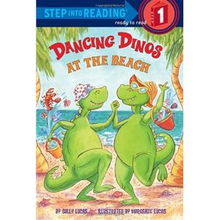
Insect Bites at the Beach: A Detailed Guide for Beachgoers
Beach days are often synonymous with relaxation and fun, but they can also come with an unwelcome surprise: insect bites. Whether it’s a pesky mosquito or a curious sand flea, these bites can turn a peaceful day into a itchy and uncomfortable experience. In this article, we’ll delve into the various types of insect bites you might encounter at the beach, their symptoms, and how to treat them effectively.
Types of Insect Bites at the Beach

Understanding the types of insect bites you might get at the beach is the first step in dealing with them. Here are some common culprits:
| Insect | Description |
|---|---|
| Mosquito | Small, slender insects with long legs and a slender body. They are known for their ability to transmit diseases like malaria, dengue fever, and Zika virus. |
| Beach Flea | Small, dark-colored insects that resemble bed bugs. They are often found in sand and can bite humans, causing intense itching and redness. |
| Fire Ant | Small, reddish-brown ants with a painful sting. They are known for their aggressive behavior and can cause severe allergic reactions in some individuals. |
| Sea Lice | Small, translucent crustaceans that live in saltwater. They can cause an itchy rash and may lead to secondary infections if not treated properly. |
Each type of insect bite has its own set of symptoms and treatment methods, which we’ll explore in more detail below.
Recognizing the Symptoms

After being bitten by an insect at the beach, it’s important to recognize the symptoms to determine the appropriate treatment. Common symptoms include:
-
Redness and swelling around the bite area
-
Intense itching
-
Pain or a burning sensation
-
Small, raised bumps or blisters
-
In the case of severe allergic reactions, difficulty breathing, swelling of the throat, or hives
It’s important to note that some individuals may be more sensitive to insect bites than others, and certain types of bites can lead to more severe symptoms, such as infections or allergic reactions.
Treating Insect Bites

When dealing with an insect bite at the beach, there are several steps you can take to alleviate symptoms and prevent complications:
-
Clean the bite area with soap and water to prevent infection.
-
Apply a cold compress or ice pack to reduce swelling and numb the area.
-
Use over-the-counter antihistamines or antipruritic creams to relieve itching.
-
Apply a hydrocortisone cream to reduce inflammation and itching.
-
Keep the bite area clean and dry to prevent infection.
-
In the case of a severe allergic reaction, seek medical attention immediately.
It’s also a good idea to carry a first-aid kit with you when visiting the beach, which should include items such as antiseptic wipes, band-aids, and a pain reliever like ibuprofen.
Preventing Insect Bites
Preventing insect bites is always better than dealing with them after the fact. Here are some tips to help you avoid getting bitten by insects at the beach:
-
Apply insect repellent containing DEET, picaridin, or oil of lemon eucalyptus to exposed skin and clothing.
-
Wear long-sleeved shirts and pants, especially during dawn and dusk when insects are most active.
<





